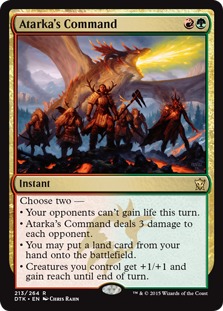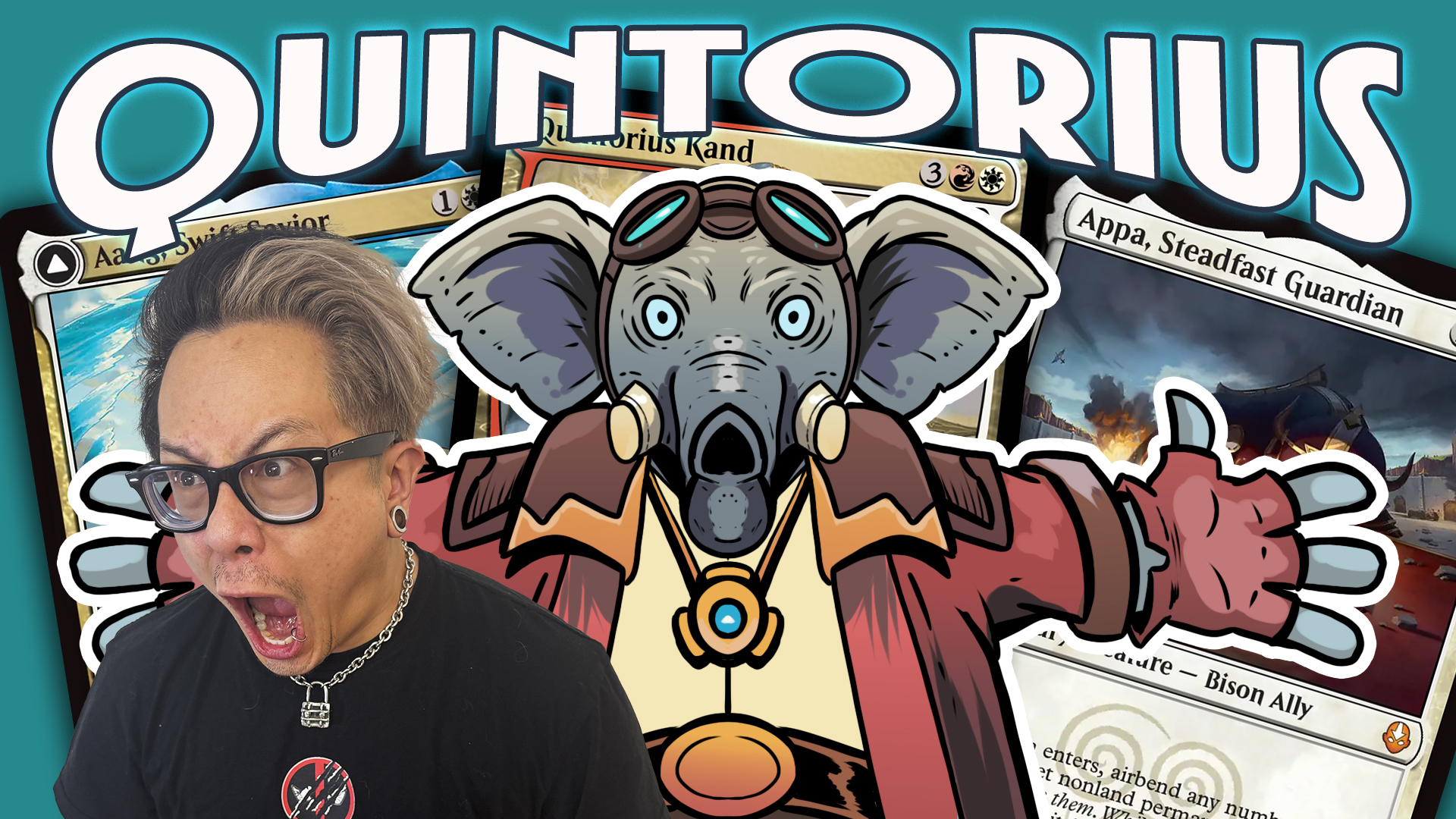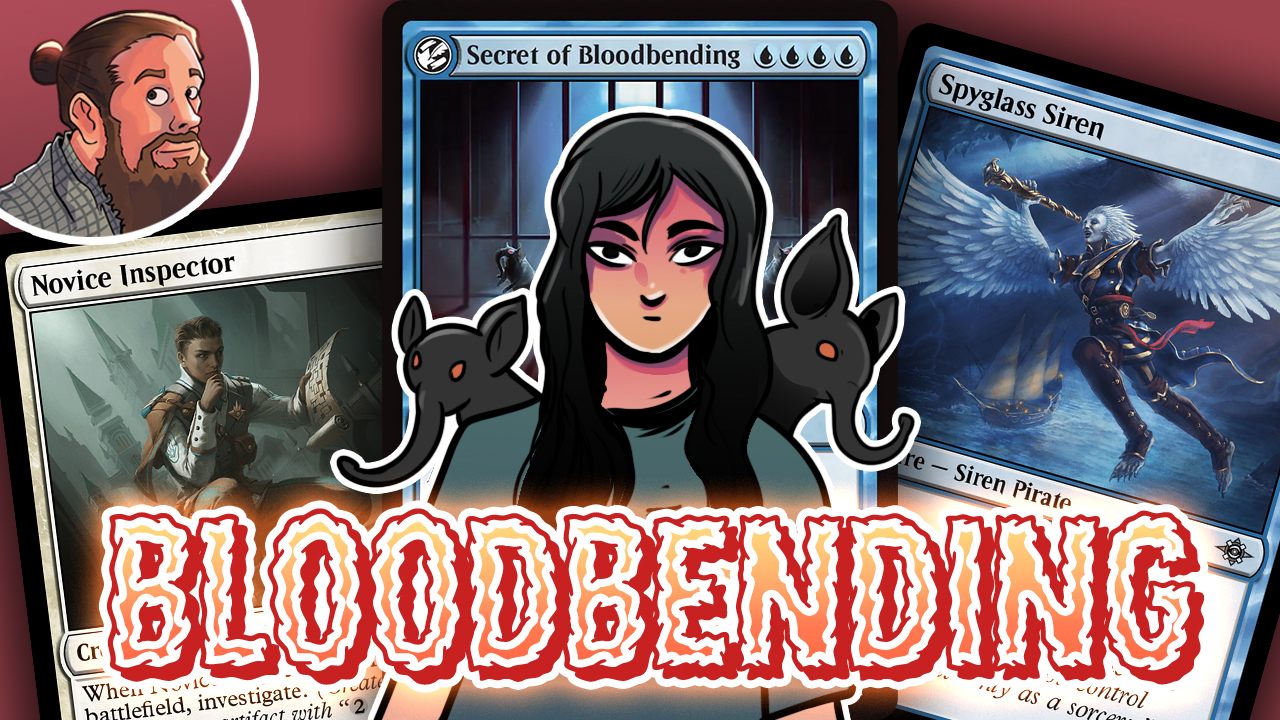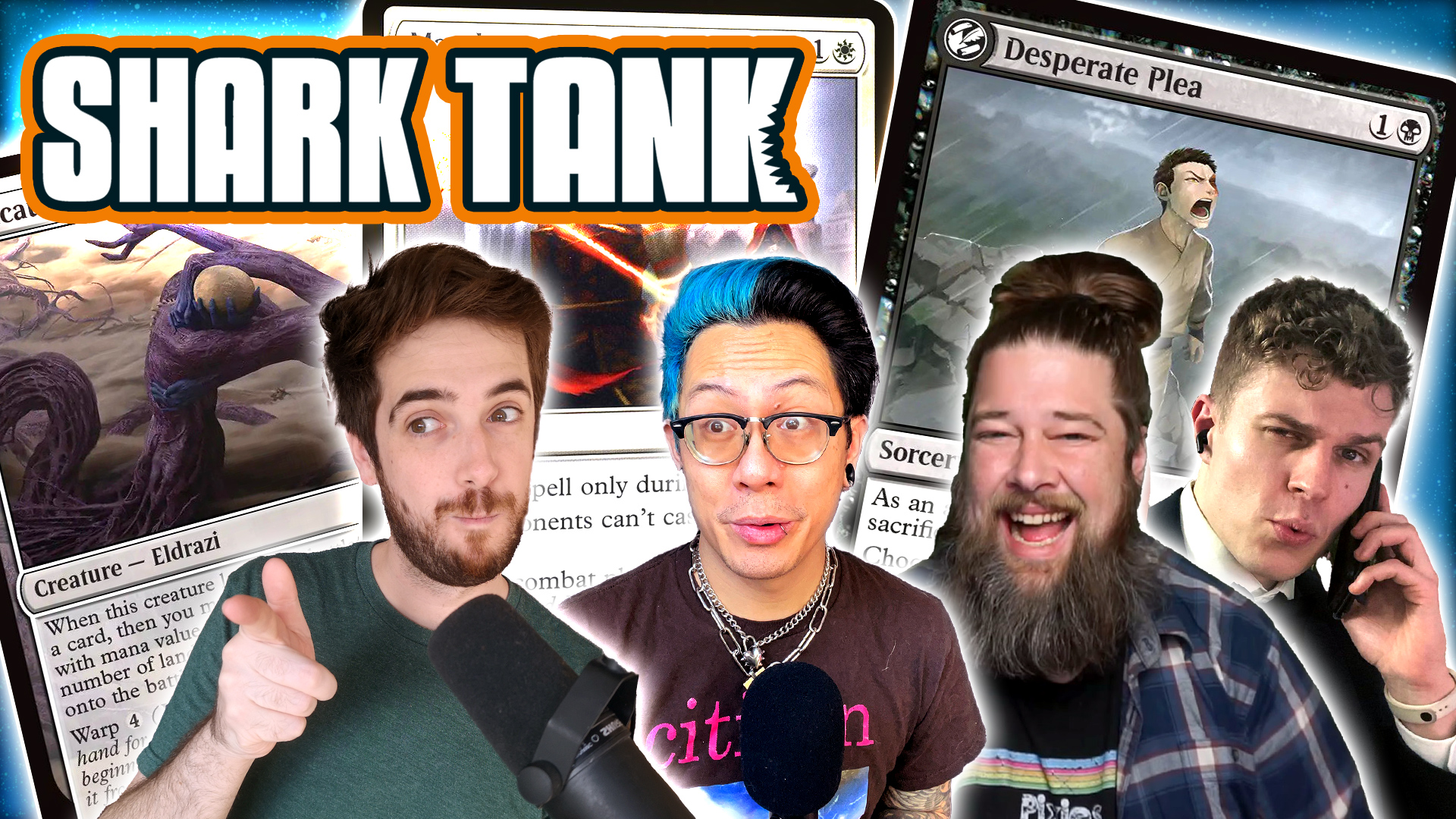Budget Magic: $84 (27 tix) Modern All-In Shaman
Ẹ n lẹ, Budget Magic lovers! It's that time again. This week, we are taking a little break from Eldritch Moon Standard and heading to Modern to play a super-aggressive tribal strategy: All-In Shaman! The idea of All-In Shaman is pretty simple: we dump our entire hand onto the battlefield over the first two or three turns and hope to finish the game on Turn 4 with a combination of Atarka's Command and Rage Forger. Essentially, we put our opponent to the test. We're very likely to lose if they happen to have a Pyroclasm or Anger of the Gods, but if they don't, we are probably going to kill our opponent before we have a chance to recover!
Let's get to the videos; then, we'll break down All-In Shaman. A quick reminder: if you enjoy the Budget Magic series and the other video content on MTGGoldfish, make sure to subscribe to the MTGGoldfish YouTube Channel to keep up on all the latest and greatest.
All-In Shaman: Deck Tech
All-In Shaman vs. Dredge
All-In Shaman vs. Temur Delver
All-In Shaman vs. Titan Breach
All-In Shaman vs. Abzan Blink
All-In Shaman vs. 8 Whack

The Deck
As I mentioned in the intro, All-In Shaman is an extremely aggressive tribal deck that looks to put the opponent under intense pressure by Turn 3 or 4 and hope they don't have one of a few specific answers to ruin our plans. When it comes to building tribal decks, my theory is that you look for the tribe's competitive advantage—what the tribe does better than any other tribe. For Shamans, it just so happens that their competitive advantage is flooding the board with creatures, which they can do better than pretty much any Modern deck outside of Affinity. The "All-In" aspect of the deck refers to the fact that we don't really have the ability to recover from a board wipe, so we pretty much just have to play like our opponent never has an Anger of the Gods or Pyroclasm and hope for the best.
Winning the Game



While dumping a bunch of creatures on the battlefield quickly is Shamans' competitive advantage, Rage Forger is the card that makes the deck work. We take a lot of risk dumping our hand onto the battlefield, so the payoff needs to be strong for the plan to be worthwhile, and thankfully it is. Rage Forger acts like a three-mana lord that pumps all of our Shamans (and every one of the 32 creatures in our deck is a Shaman) permanently, and then it turns into a Hellrider and deals a ton of damage whenever we attack with creatures. This last part is especially important because it means we don't actually have to connect with our attackers to kill our opponent, so in many situations, we can slam our team into blockers without worry, since all we really care about are the Rage Forger triggers. Our deck always wants at least one Rage Forger in our opening seven, and is perfectly happy with multiple copies of Rage Forger, since the one-damage abilities trigger separately.
In fact, we want Rage Forgers so badly that we play the full four copies of Flamekin Harbinger to make sure we have one (or more) by tutoring them from our library. Actually, apart from searching for more copies of Flamekin Harbinger (which isn't very exciting), Rage Forger is the only tutor target for Flamekin Harbinger in our deck. Ideally, we'd be able to play the Flamekin Harbinger on Turn 1, play a bunch of stuff on Turn 2, and then play our Rage Forger on Turn 3 to pump our team and start dealing tons of damage. Fauna Shaman is sort of the backup Flamekin Harbinger. The problem is that Fauna Shaman is pretty slow, requiring us to untap before we can search, but the biggest reason there is only one copy in the deck is that at $11 a copy, it is pretty expensive for our budget.


Atarka's Command is basically Rage Forgers five through eight. While it isn't quite as good—since it only works for one turn, while Rage Forger (assuming it lives) deals additional damage turn after turn—it is still a great way to close out a game in a deck that can easily have four creatures on the battlefield by the end of Turn 2. Most of the time, we use it to give our team +1/+1 until the end of turn and deal three damage, but we occasionally use it as a Skullcrack to prevent the life gain from a Siege Rhino or Kitchen Finks. Meanwhile, Lightning Bolt gives us some additional reach, while also working to clear away blockers in the early game for a low mana cost.
Flooding the Board

I mentioned a minute ago that the biggest reason to play Shamans is the tribe's ability to flood the board on Turns 2 and 3. The easiest way to do this is Burning-Tree Emissary, which is essentially a free 2/2 once we get to two mana. Most of our nut draws start with multiple copies of Burning-Tree Emissary into another two-drop on Turn 2, followed by a Rage Forger on Turn 3. Remember: thanks to Rage Forger, each Burning-Tree Emissary deals four damage when it attacks due to the +1/+1 counter and the one-damage trigger, which means we are often dealing eight or twelve damage on Turn 3, and this isn't even taking into account our one-drops.


We also have the ability to build our own Burning-Tree Emissary with Bosk Banneret and Beastcaller Savant. Bosk Banneret is a little bit slow, but it does allow for explosive turn threes where we play a two-drop (for one mana) into a Rage Forger. It also combos with Beastcaller Savant. With a Bosk Banneret on the battlefield, Beastcaller Savant costs one mana and immediately adds one mana, so we can play any number from our hand, just like Burning-Tree Emissary. Plus, it's solid on Turn 2, when we can do things like Burning-Tree Emissary into Beastcaller Savant into a one-drop. Basically, when we combine Beastcaller Savant, Bosk Banneret, and Burning-Tree Emissary, we have a whole bunch of ways to play multiple creatures on Turns 2 or 3, which helps make our Rage Forgers and Atarka's Commands even more devastating.
Other Stuff



Firedrinker Satyr is actually pretty horrible, but one thing the Shaman tribe lacks is a second good one-drop behind Flamekin Harbinger. The problem with Firedrinker Satyr is that it's really bad at blocking, isn't even all that great at attacking (it gets chumped and deals damage to us), and turns opposing Lightning Bolts into Searing Blazes. That said, it does have two power, and we really need more than just Flamekin Harbinger in the one-drop slot. In a non-budget list, I would probably look outside the tribe for help with something like Goblin Guide.
Elvish Visionary is sort of the reverse Burning-Tree Emissary. Instead of not costing us mana, it doesn't cost a card. It's pretty much just an additional Shaman body on the battlefield to get pumped by Rage Forger. Burning-Tree Shaman, on the other hand, is just big. In all the games we played, I don't think it ever dealt a damage with its "when an ability is activated" trigger. However, it is nice to have at least one creature that isn't a 1/1 or 2/2, and as a 3/4 for three mana, it's somewhat above the curve in general and very above the curve for the Shaman tribe.
The Sideboard




The sideboard sticks with the Shaman theme and gives us access to a lot of high-variance cards that aren't quite good enough for the main deck. Reclamation Sage is great against Affinity and also gives us an out to cards like Worship and Ensnaring Bridge. Goblin Ruinblaster is the Shaman version of Fulminator Mage and is key to buying an extra turn against a deck like Tron. Loaming Shaman is our secret tech to beat Dredge, while also adding value against other random graveyard decks. Finally, Essence Warden can help swing the race against other aggressive decks like Burn or Zoo.



Finally, we have a bit of removal. Since we are so focused on winning quickly, we aren't too worried about killing big things. If we get to the point where our opponent is casting things like Wurmcoil Engine, we probably aren't going to win even if we can kill the threat. On the other hand, I was a bit worried that some aggro / combo decks would just be a little bit faster than we are, so we have Sudden Shock, Gut Shot, and Dismember as cheap, efficient ways to deal with things like Inkmoth Nexus, Blighted Agent, Eidolon of the Great Revel and creatures wearing Cranial Plating.
Ultra-Budget All-In Shaman

To get All-In Shaman even cheaper, we need to cut two main cards. The first is Fauna Shaman, which isn't really a big concern, since it was only a one-of anyway. While having a ninth Rage Forger is nice, it isn't really essentially to the deck's success. The second cut is a bit more problematic: Atarka's Command. While getting rid of the powerful pump / burn spell is necessary to get All-In Shaman into the ultra-budget price range (the playset alone was about one-fourth of the deck's cost), losing it really, really hurts. While Rage Forger is great, the combination of Rage Forger and Atarka's Command on Turn 4 is almost always game ending. Plus, having additional reach never hurts in an aggro deck, and every once in a while, keeping an opponent from gaining life ends up winning a game we otherwise would have lost. My advice would be this: if you are thinking about starting with the ultra-budget build of All-In Shaman, plan on upgrading to Atarka's Commands when Dragons of Tarkir rotates from Standard in about a month and you might be able to save yourself a couple of dollars per copy.
Non-Budget All-In Shaman

The non-budget version of All-In Shaman isn't that different from the budget version, in terms of the number of cards that change; however, the small number of upgrades we do make are hugely impactful. First, we get to fix the mana base, dropping the painful Temple of Abandon and the middling Rootbound Crag for shock lands and fetch lands. Second, we drop Firedrinker Satyr for Goblin Guide. While Goblin Guide isn't a Shaman, I'm pretty sure that even though we lose a little bit of tribal synergy, Goblin Guide is far better than Firedrinker Satyr in the deck. Third, we get Blood Moon in the sideboard for additional free-win potential. Fourth, and most important, we get four copies of Collected Company. One thing I learned this week from playing Four-Color Warriors for Much Abrew About Nothing is that Collected Company is so powerful it can take a middling to poor tribe and make it playable, so imagine what it can do for Shamans—a tribe that has several advantages over Warriors (faster, Rage Forger, burn spells for reach). All in all, I think the non-budget version is a significant upgrade to the version we played in the videos, but the cost is pretty steep, so upgrade at your own risk.
Conclusion
Anyway, that's all for today. Overall, we finished 4-1 in matches and actually played against quite a few "real" decks in Merfolk, Titan Breach Scapeshift, Abzan Blink, and Dredge. We actually came extremely close to ending up 5-0, losing only a super-close match to the Scapeshift deck, where we were about one turn away from winning game two (and the match) when our opponent managed to Through the Breach in a Primeval Titan to kill us from 24 life. The deck felt fairly competitive and performed even better than I imagined it would heading into the matches. I think it can definitely compete at the FNM level, and maybe more with some upgrades (although if you are going to spend $700, it's probably better to just buy a tier-one Burn list if your goal is to win a Grand Prix or SCG Open). It's also really fun to play, assuming you like aggressive, tribal strategies. If you like 8 Whack Goblins, All-In Shaman should be right up your alley.
As always, leave your thoughts, ideas, opinions, and suggestions in the comments, and you can reach me on Twitter @SaffronOlive or at SaffronOlive@MTGGoldfish.com!













